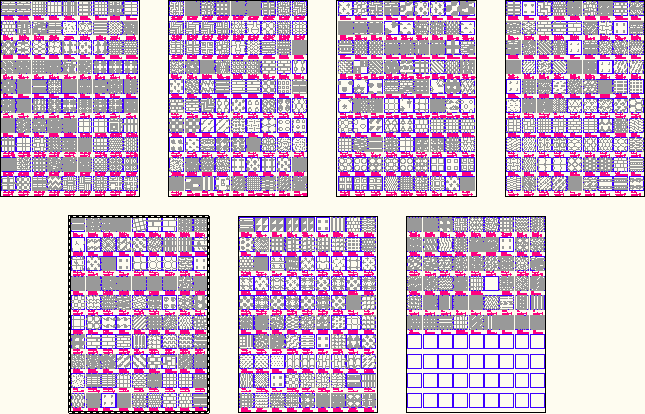

Any AutoCAD hatch pattern can be used by Revit. Revit's existing restrictions limit the maximum size and density of the patterns, and a review of these restrictions is planned for a future release.įill patterns are used to represent materials on a surface. These are guidelines only, not enforced by Revit. Drafting patterns usually contain sizes from 0.04 to 1 inch (1 - 25 mm) model patterns usually contain sizes from 2 to 20 inches (50 - 500 mm). Drafting patterns are used to symbolically denote materials such as steel, concrete, sand, etc.ĭrafting patterns are typically defined with smaller numbers than model patterns. If you import the pattern at scale 1 and print at 100% zoom, the pattern's dimensions on paper will be exactly as specified in the file, regardless of view scale. Model patterns appear denser at coarser view scales and sparser at finer ones.ĭrafting patterns are defined in paper units. A 2-meter-tall wall with a 200x400 mm brick pattern will have 10 courses. An 8x16 inch brick pattern will show exactly 12 courses on an 8-foot-tall wall. They are defined and display in model units. Model patterns are used to depict real-world elements, such as bricks, shingles, tiles, etc. Drafting patternsThere are two types of fill patterns in Revit: model and drafting. Specifically, I want to talk about model versus drafting patterns, custom patterns and then a related and "accepted" Revit Idea. This post will cover a few thoughts related to this functionality within the software. Select an object on the layer that you want to lock or unlock.In Autodesk Revit, Fill Patterns help define materials on an element's surface and when it is cut in elevations, 3D views and sections. Do either of the following: Click Home tab Layers panel Lock.
How to add hatch patterns to autocad 2017 software#
2021 How do I open a pat File in Windows?ĭepending on your operating system, you will right-click on the PAT file, select “Open With” and select either Unknown Apple II File, Sound, Orchida Embroidery System, or a similar software program from the installed programs on your PC. What is a pat file?Ī file with the PAT file extension is most likely a Pattern Image file used by graphics programs for creating a pattern or texture across an image using a small and usually square picture.21 jui. 2021įirst put the pat file in the support folder, found by using options and it’s usually the first folder listed under Files – support file search path. However, these may vary depending on the stowage space and the type of cargo that is carried.8 jan. Folding type hatch covers are basically used on general cargo ships. Types Of Hatch Covers Rolling type can be divided into end rolling, side rolling, and piggyback & telescopic. Open the Trusted Folders path and add your custom folder to the list. Select the Support Search path and add your custom folder to the list.Ĥ.

Open Options in AutoCAD and select the Files tab.ģ. Put all your “custom” hatch patterns in a folder.Ģ. It has a header line with a name, which begins with an asterisk and is no more than 31 characters long, and an optional description.9 sept. … Regardless of where a definition is stored, a custom hatch pattern has the same structure. Hatch patterns are defined in one or more definition files that have a. If using AutoCAD LT you may find your Hatch Patterns are located in the UserDataCache folder.13 avr. As mentioned this file is usually located in program files under your program filesautocad-versionsupport folder. To set the properties of the hatch, including the origin, click Hatch Creation tab Options panel Match Properties drop-down Use source hatch origin.Ĥ. How do I copy a custom hatch pattern in AutoCAD?Ģ.


 0 kommentar(er)
0 kommentar(er)
